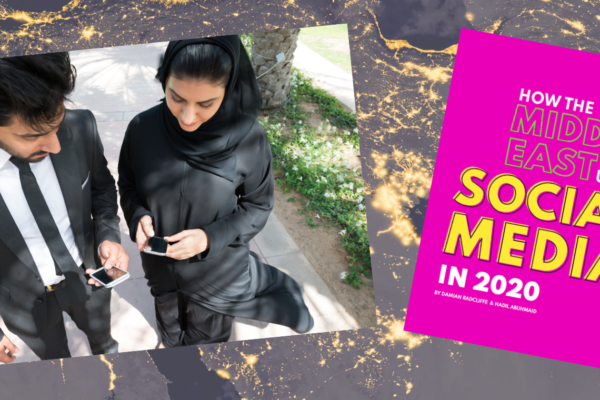Social media in the Middle East: 5 key trends
People in the MEA (Middle East and Africa) region are some of the most prolific users of social media in the world, driven partly by Covid-19, ever-faster internet and widespread smartphone take-up, according to the “How the Middle East Used Social Media in 2020” report which collated and analysed trends in the region.
This in turn drives continued investment in content on social media platforms – especially during Ramadan – and growing partnerships between traditional media players and social media channels and influencers.
The in-depth report is researched and written by Professor of Journalism and FIPP contributor Damian Radcliffe, and Hadil Abuhmaid, a Media Studies PhD student and Graduate Employee, both at the University of Oregon. It was produced in partnership with the New Media Academy in the United Arab Emirates.
Its 64 pages are rich with stats, analysis and insight on the region and its diverse social media ecosystems, drawn from over 200 sources. The authors spoke to academics and gathered data from news releases, interviews, media and event coverage, as well as studies produced by agencies and brands.
Here we look at five key takeaways from the report, which you can download in full in English or Arabic here.
1. People in the Middle East use social media more than almost anyone else.
As was the case across the world, social media use increased during the early stages of the pandemic. Yet out of all regions, social media users in MEA spend the most time on social networks: an average of 3.5 hours per day. The only other region with a similar average is Latin America.
Social media is thus highly integrated into people’s daily lives. For instance, some 70 per cent of Egypt’s Internet users watch YouTube on a daily basis. Research has also revealed that internet users in MEA have an average of 8.4 social media accounts. The UAE, with an average of 10.5 accounts, has “the highest number of social media accounts per person globally”, Forbes reports, with an incredible 98.98 per cent of the Emirati population being active on social media, according to a separate, more recent study.
2. Social media drives news consumption among Arab youth.
Some 79 per cent of Arab youth say they get their news from social media – a huge increase from 2015 when that number was 25 per cent, according to the 2020 Arab Social Media report.
As this finding shows, “social media increasingly influences numerous aspects of digital diets in the Middle East,” write the report’s authors. “Covid-19, faster mobile networks and growing smartphone take-up has only increased these behaviors, creating social media habits which are only likely to grow.”
3. Misinformation on social media is a massive problem.
Misinformation is an insurmountable problem everywhere, and social media is weaponised in MEA as in other regions. For instance in Iraq, the Kata’ib Hezbollah group, which is listed as a terrorist organisation by Japan and the US, has paid large sums of money to Facebook to boost fake accounts and pages. In 2020, Facebook also removed two networks of fake accounts with over 6m followers linked to two digital marketing companies in Egypt and India. The report details many more instances of social media tools being misused in this way.
In response to the threat of misinformation several countries, including Turkey and Algeria, have passed laws that regulate social media content and criminalise fake news. However, critics have pointed out that this extends governmental control over platforms like Facebook and Twitter and could be a tool for suppressing free speech.
4. Twitter use has declined in favour of other channels, but it still matters.
In recent years, Twitter has seen some decline in usage in the Middle East as audiences have moved to other, newer social media platforms. However, it continues to play an important role in some of the biggest markets in the region. For example, Turkey (6th, with 13.5m), Saudi Arabia (8th, with 12.3m) and Egypt (18th, with 3.7m) are all in the top 20 countries by audience for Twitter; and in each market, numbers are continuing to increase.
At the same time, these three nations – Turkey (6th, with 44m), Saudi Arabia (16th, with 15m) and Egypt (20th, with 14m) – are also in the top 20 for largest audiences, by country, for Instagram in the world.
5. The Beirut explosion and Black Lives Matter were galvanising events.
The Black Lives Matter movement which spread across the world following the killing of George Floyd in May 2020, and the devastating explosion in the port of Beirut in August generated huge discussion on social media in MEA.
The hashtags #BlackLivesMatter in Arabic and English and the hashtag #BLM were trending during June, resulting in media coverage across the region and internationally.
Following the explosion in Beirut, hundreds of Lebanese offered shelter via social media – using the hashtag #OurHomesAreOpen in Arabic and English – to those who were displaced by the tragic event.
“How the Middle East Used Social Media in 2020” is free to download and is available in English and Arabic.












